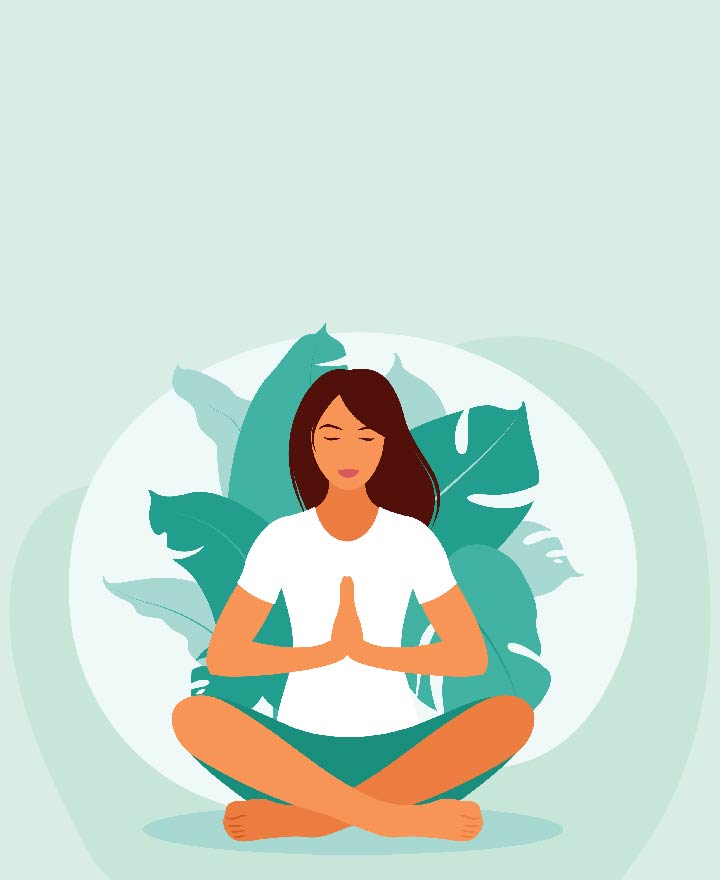

Benefits of Yoga for Better Sleep
Yoga has shown to benefit all age groups and from children to elderly, yoga provides numerous health benefits. Certain yoga poses not only improve sleep but it is believed that they are even effective in promoting better sleep. Read on to know more.
good for sleep?
There are a number of reasons why yoga might help improve your sleep. Some of these include:
1. Mindfulness
This practice involves focusing attention and awareness on the present, which has shown to increase melatonin levels in the body, which can help improve sleep.
2. Physical exercise
As per several studies, regular exercising can help person sleep better. Light exercise such as gentle yoga can actually help you sleep better. Yoga incorporates various complex postures, which give your body a workout. This regular exercise may help relieve stress and improve sleep quality and duration.
3. Breath Awareness
Breathing is an essential part of yoga and deep breathing, in particular, can help relax your body and improve your sleep.
Best Types of Yoga for Sleep
Not all types of yoga are right for helping you sleep better. If better sleep is your goal, it is important to select an approach focused more on relaxation and stretching. Here are the best types of yoga to do before sleep:
1. Hatha yoga
This type of yoga is centred on different body positions and is usually practiced at slower pace and utilizes deep breathing.
2. Restorative yoga
This is a restful practice that invites body to rest in poses to ensure deep relaxation and diaphragmatic breathing.
3. Yoga Nidra
This form of yoga utilizes guided relaxation to withdraw from the senses and drop into a deep state of relaxation while still maintaining full consciousness.
Yoga Poses to Try
Learning a few simple moves and practicing them as part of your nighttime routine can ease tension and relax your body so that you can sleep peacefully. Some basic poses you might try include:
1. Legs up the wall pose
This involves lying your back onto mat and gently place your legs up the wall making a 90° angle with your body. This simple pose helps recirculates your blood flow.
2. Standing forward bend (Uttanasana)
This pose involves allowing your torso to fold over gently bent legs while in a standing position with head and neck relaxed towards the floor.
3. Reclined bound angle pose or Butterfly pose (Supta Baddha Konasana)
This involves lying on your back and bringing the soles of your feet together, dropping your knees out to the sides.
4. Corpse pose (Savasana)
This pose is performed by lying on the floor with your legs stretched out straight, arms relaxed at your sides and palms facing up.
Tips to Get Started
Here are some tips to guide your practice:
1. Make it a habit and a part of your regular bedtime routine.
2. Create a relaxing environment to perform yoga.
3. Dress in comfortable, loose-fitting clothes when practicing yoga.
4. Focus on your breath as deep breathing used in yoga is so beneficial for sleep.
Conclusion
If you struggle with your sleep, yoga can be a great addition to your nightly routine. However, Yoga is not a substitute for other treatments. If you are still experiencing sleep problems after trying yoga and other healthy sleep practices, you should talk to your doctor.
One of the important components of our overall wellness is also being financially secured. Healthcare emergencies can happen any time, but a good health insurance can protect you from such uncertain situations. To know more about it, click here
Source: YogaJournal, WebMD, HopkinsMedicine
Disclaimer: This blog provides general information and discussions about health and related subjects. The information and other content provided in this blog, website or in any linked materials are not intended and should not be considered, or used as a substitute for, medical advice, diagnosis or treatment. Kindly contact your Doctor before starting a new medicine or health regime.
Related Articles
What is Ashtanga yoga and its benefits
Pilates vs yoga - Whats the better workout
7 effective yoga asanas that will help with diabetes
Published on April 11, 2023

















 Health Insurance
Health Insurance  Travel Insurance
Travel Insurance  Car Insurance
Car Insurance  Cyber Insurance
Cyber Insurance  Critical Illness Insurance
Critical Illness Insurance
 Pet Insurance
Pet Insurance
 Bike/Two Wheeler Insurance
Bike/Two Wheeler Insurance  Home Insurance
Home Insurance  Third Party Vehicle Ins.
Third Party Vehicle Ins.  Tractor Insurance
Tractor Insurance  Goods Carrying Vehicle Ins.
Goods Carrying Vehicle Ins.  Passenger Carrying Vehicle Ins.
Passenger Carrying Vehicle Ins.  Compulsory Personal Accident Insurance
Compulsory Personal Accident Insurance  Travel Insurance
Travel Insurance  Rural
Rural